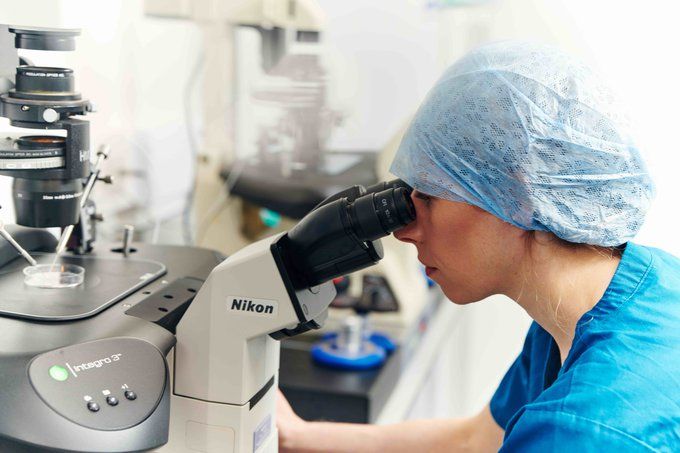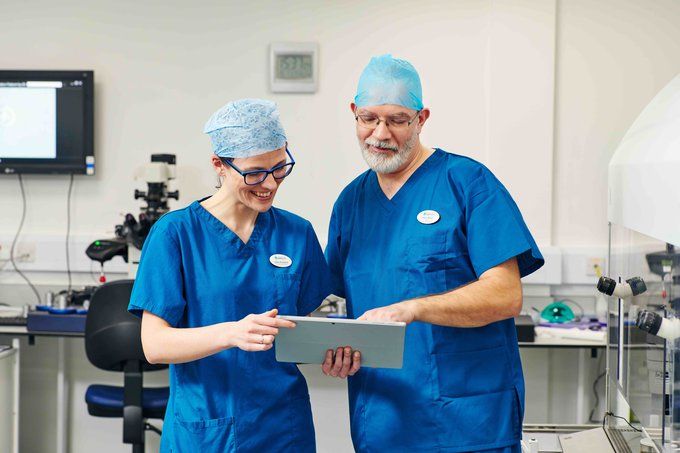
Did we answer all your fertility questions today?
If you still feel you need more guidance and support, you can book a FREE 1-2-1 discovery meeting to talk through the options available to you.
If you have suitable embryos, they will be cultured to blastocyst stage in our embryology laboratory at no additional charge.
Your embryo becomes a blastocyst when it has reached a very specific, advanced stage of development, where we can see the cells that will eventually form the placenta and baby.
Developing embryos to blastocyst stage involves further culture in our laboratory, to day 5, which helps us to identify which embryos which have good pregnancy potential.
Whether you have blastocyst transfer in your IVF cycle depends on embryo development, and how many are progressing well at day 3, which is when we grade embryos.
We may either advise to transfer an embryo on day 3 or leave embryos in culture to reach blastocyst stage.
If you only have a small number of embryos, it may be evident by day 3 which is the best for transfer. We will carry out your transfer on day 3 so your embryo can continue to grow and develop in the optimum conditions of your uterus.
However, if there are several embryos on day 3, then the best way of selecting the most viable embryos is to continue to grow them in the laboratory until day 5 or day 6.
Not all day 3 embryos will keep developing until day 5 or day 6. This helps our embryologists to choose embryos with a higher implantation potential, but it does mean that you are likely to have fewer embryos on day 5 or day 6 than you had on day 3.
The morning after egg retrieval we examine your eggs for signs of fertilisation. We need to see that the genetic material of the egg and sperm have joined together. If your eggs have fertilised, they are now known as embryos.
We would now expect to see cell division – or cleavage - start to happen. This is when the embryo divides from a single cell to multiple cells. If you do not have many embryos, we may advise that your embryo is transferred now.
The cells continue to divide, and the embryo starts to change shape slightly, becoming more compact. Embryo transfer may also be recommended now.
Significant cell changes happen as the cells transform and divide rapidly as the embryo progresses through a stage called morula.
The embryo is now a Blastocyst. Cells have begun to differentiate from each other, and two groups of cells can be made out under the microscope. Some of the cells will form the baby and others will form the placenta. Blastocyst embryos are usually transferred, or frozen for future use, on day 5.
Embryo development in our laboratory is now complete. If your embryos have reached blastocyst stage on day 6, and are of good grades, they can be used for your treatment.
Add-ons are optional extras that you may be offered on top of your normal fertility treatment, often at an additional cost.
Some clinics may include certain add-ons with their treatment packages as standard whilst others charge separately, this add-on is included as part of your treatment, within our packages at Manchester Fertility.
Your doctor will be able to provide you the complete information and risk associated with any of these add-ons, we offer these add-ons after a full discussion with our experts and after your specific individual circumstances have been considered.
If you require more information on add-ons you can visit the HFEA website here.

If you still feel you need more guidance and support, you can book a FREE 1-2-1 discovery meeting to talk through the options available to you.

